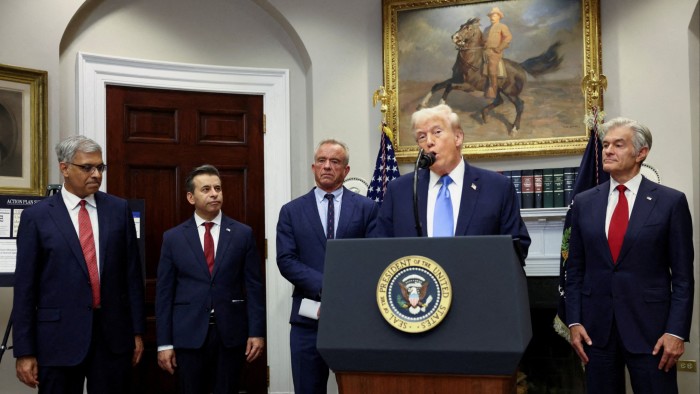How independent is the Fed anyway?

Stay informed with free updates
Simply sign up to the Central banks myFT Digest — delivered directly to your inbox.
Central bank independence has become a shibboleth for academics and commentators, who reckon that an independent central bank is a fundamental pillar of sound economic policymaking. This is why attacks on the Federal Reserve have caused such angst.
President Donald Trump was savaging Jerome Powell on social media way back in 2018 — not long after he appointed the Fed chair — but that was like a light warm-up compared to the torrent of abuse he has dished out this time. Now, more concerted action is afoot.
Earlier this month, the US president slotted his boy Stephen Miran on to the Board of Governors to pound the table for rate cuts. And soon the Supreme Court will make a judgment on whether Trump has the authority to sack governor Lisa Cook. And still, markets have appeared so far indifferent to the Federal Reserve’s woes.
This made us wonder, just how independent is the Fed anyway?
In some respects it seems almost too independent; in other respects, not. And how does it compare to the ECB, the Bank of England, the BoJ? If only academics and central bankers had bothered to nerd out on a taxonomy that we could use to compare the relative levels of different central banks’ independence rather than merely spitballing.
But of course they have.
In 1980, Robin Bade and Michael Parkin from the University of Western Ontario attempted to rank independence for a cross-section of countries. But it was two landmark papers — the first in 1991 by Vittorio Grilli, Donato Masciandaro and Guido Tabellini, and the second a year later by Alex Cukierman, Steven B. Webb and Bilin Neyapti — that saw the best-known multi-country indices of central bank independence created.
More recently, Davide Romelli of Trinity College Dublin has expanded this work through time, across countries, and into new dimensions of central bank independence to produce his CBIE index.
So how does the Fed stack up against peers in the independence stakes, and how has this changed over the last two decades?
Each of the taxonomies arrives at a slightly different answer. But it’s notable that the Fed does not, in any reading, rank as the paragon of de jure independence. Its mid-table position puts it ahead of both the Bank of England and the BoJ. But the ECB, Riksbank and [checks notes] the People’s Bank of China all score better.
How is this possible? We’re not surprised to see goody-two-shoes Europeans come out ahead. But China? Sure, the US has taken a bit of a right turn when it comes to tolerating free speech, political dissent, etc. But is the Fed really less independent than the PBoC — central bank of a famously authoritarian single-party state not noted for its love of independent checks and balances?
Digging into the data, it turns out that the CBIE index value is the average of six subcomponents. So when it comes to policy independence and limits on lending to government, the Fed scores highly. When it comes to having an unambiguous statutory goal that doesn’t involve contradictory trade-offs, or a framework that guarantees the executive can’t control the board of governors, the Fed is mid.
Furthermore, each one of these subcomponents aggregates answers to a number of questions. Pretty impossible to dismiss the central bank governor? Tick. Prohibited by law for the governor to hold other offices in government? Tick. The governor can be reappointed if they are deemed to do a good job? Raised eyebrows. But only for a maximum of two terms? Half a tick then.
And looking solely at board independence scores, the PBoC ranks second-lowest in the world.
One might reasonably assume that if the executive branch of government has almost complete control of the board, other statutory protections of independence could prove irrelevant.
And so the index data looks to us a lot like an inventory count of each central bank’s attack surface — the plethora of vulnerabilities available for bad actors to exploit. These catalogues are valuable and interesting. But if successfully exploiting a single fatal vulnerability is enough to compromise independence, having a high overall score won’t mean much.
The IMF has come up with yet another index of central bank independence last year which looks like it sought to address this issue, but unfortunately we haven’t been able to get hold of their country-level data to check.
Working with what we’ve got, one thing that really comes out from Romelli’s CBIE data is that while the catalogue of vulnerabilities across the rest of the world used to make the Fed look comparatively robust, the rest of the world has moved on and closed down possible attack vectors. Meanwhile, the Fed has remained pretty unch:
Whether defenders of Fed independence will end up paying a price for this stasis will be seen in the weeks and months ahead.
In the meantime, let’s enjoy the numbers for the cool charts they allow us to make. And also for the questions they allow us to explore.












